Why Did Christianity Continue to Grow in Rome Despite Roman Persecution
Ancient Rome was a predominantly polytheistic civilization, and religion was crucial in the empire.
This meant that people worshipped multiple deities, and the belief in the presence of only one God was not majorly supported.
Jews constituted a considerable part of Ancient Rome's population in the first century CE. Even though Judaism was a monotheistic religion, it was recognized as legal, and the Jews were allowed to continue their faith.
Christianity in ancient Rome began sometime between 35 and 40 CE with fewer than a thousand individuals.
A small group of Jews in the region of Judea were the initiators of this religion after the death and resurrection of Jesus Christ.
Since Christianity considered quite a few Judaic practices sacred and even continued them, it was likely that Jews started accepting and following this religion.
How did the Roman Empire help spread Christianity?
The Roman Empire helped spread Christianity worldwide, becoming a center of Catholicism.
Initially, Peter and Paul preached the teachings of Jesus within the empire.
Numerous persecutions later, Christianity was legalized and declared the state religion.
This major shift attracted a massive number of followers from around the globe, and Christianity went on to grow tremendously within and outside of the empire.
How did Christianity affect Roman culture?
Opposite to the traditional culture of the Roman Empire that demanded that people worship and perform sacrifices for deities, Christianity brought in the message of love, equality, human dignity, and the promise for a better life.
This shift resulted in many cruel and outdated traditions of the ancient roman religion traditions being terminated.
How did persecution help strengthen Christianity?
The constant hatred and persecution the early Christians endured strengthened people's faith and belief in Christianity.
As this religion highly supported equality and promised salvation, the suffering caused due to persecution acted as a tool to increase its popularity.
People were compassionate towards Christianity since it brought a whole new perspective of religion at a time when the imperial cult was dominant.
How did Christianity start in Ancient Rome?
Paul the Apostle was the first active preacher of Christianity in Ancient Rome.
Although he was not among the original 'Twelve Apostles,' he spread the teachings of Jesus to an impressive extent, becoming a significant figure of the Apostolic age.
Although the Roman Empire was thriving, a considerable proportion of the nation's population was poor and needy. There was no practice of organized charitable events to provide for those in need.
The Christian community was renowned for sympathizing with and aiding those in need from its initial stage.
This charitable nature of the Christian community was a key factor in supporting the start of Christianity among the non-elite members of the Roman Empire, as they saw this religion as their salvation.
The ethical monotheism nature of Christianity attracted widespread popularity in Ancient Rome and around the globe.
Christianity filled in the gap of acceptance between the elite and commoners as it provided a sense of belonging and dignity to an ordinary individual in society.
This resulted in the rise of early converts to Christianity in Ancient Rome.
The initial converts were commoners intrigued by the powerful ideas that religion carried. These people saw only gain if Christianity became an accepted and successful religion.
How was Christianity viewed during the start?
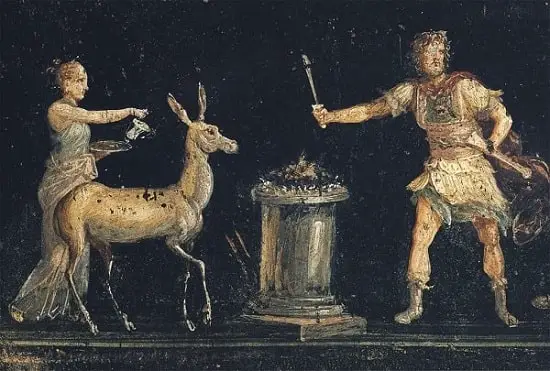
Christianity was regarded as a hated religious movement since it initially gained converts.
The ideology behind the religion was based on the birth, life, death, resurrection, and teaching of Jesus Christ. A religion claimed to offer salvation and signified that there was only one God.
The conservative Romans proclaimed this a threat since Christianity did not support sacrifice to the gods.
The Romans were highly faithful to sacrifice and worship at that time and believed these were necessary to maintain peace and harmony in society.
They perceived the Christians as endangering themselves and everyone around them by refusing to continue the traditional religious practices.
The imperial cult of Ancient Rome considered the emperors and their families divine and to be worshipped.
The Christian religion also threatened this practice since the preachers and converts refused to worship the emperors, referring to them as only men.
Due to this refusal, the Christians were suspected of treason as well.
The gatherings conducted by the Christians for church services were also looked upon as suspicious since non-Christians were forbidden to participate.
These meetings, which purely celebrated the brotherly-sisterly love among the Christians, were rumored to be held for practicing incest and open sex.
Christianity was not supported by a significant percentage of the population and the emperors of Ancient Rome during its initiation phase.
This religion was looked down upon, and numerous efforts were directed toward demolishing it.
Why was Christianity outlawed in Ancient Rome?
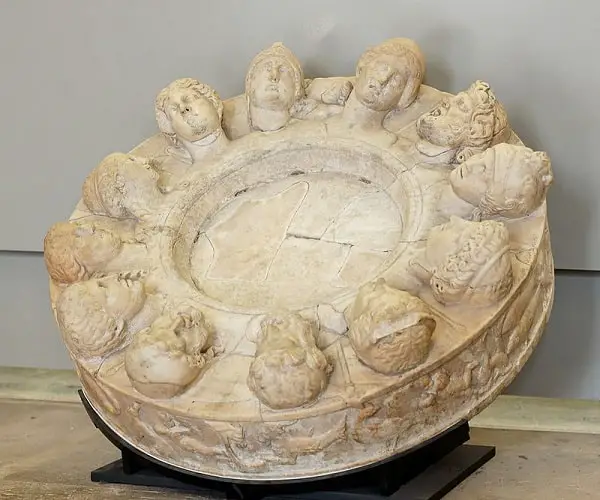
Christianity in Ancient Rome started as a religion based on ethical monotheism in a nation where polytheism was deeply rooted.
The conflict of beliefs and contradiction of opinions was inevitable between the conservative Romans and the early converts.
Traditionally, Romans worshipped multiple deities and performed sacrifices dedicated to them. Religion and its practices were vital to the Romans.
This primary practice was forbidden in Christianity since it constituted one God and no sacrifices were necessary to worship.
The religion also challenged the imperial cult of Ancient Rome as Christianity allowed worshipping only one God and no man.
The emperors and their families, considered divine as per the imperial cult, were not subject to being worshiped under Christianity.
This belief contrast, led the emperors and the conservative Romans to conclude that Christianity threatened the nation, overshadowing its good deeds.
The general aversion to Christians was born from their refusal to worship the gods and emperors or participate in sacrifices, which was expected from those who lived in the Roman Empire.
The dislike towards Christianity from an imperial level resulted in the religion being criminalized and the followers being subject to repeated persecutions.
Why were the early Christians subject to persecution?
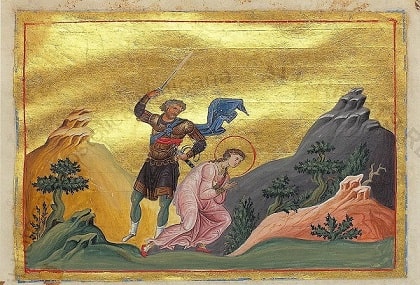
Due to the conflicting beliefs between paganism and Christianity, the early Christians were likely subject to mistreatment and even death.
The persecution of Christians began at a local societal level. They would be persecuted for failure to worship the emperor since their religion prohibited idolatry.
The first mass persecution of Christians organized by the Roman government was in the reign of emperor Nero in 64 AD.
The emperor bluntly blamed the occurrence of the Great Fire upon the Christians and their religious beliefs.
They were arrested and even executed under the command of Nero. Brutal treatment was given to the arrested, and it is believed that Nero even used them as a source of amusement by harassing them in various ways.
According to some historians, Christians were heavily persecuted towards the end of the rule of Roman Emperor Domitian, 89 AD to 96 AD.
However, this is debatable because it does not have solid factual evidence backing it.
The succeeding emperors followed the trend of mistreating Christians, but neither made it an actual plan to persecute them.
During the reign of Marcus Aurelius, 161 AD to 180 AD, anti-Christian activity grew sporadically. The number of persecutions rose, and so did the level of brutality.
One of the most severe persecutions was carried out in 177 AD in the Sanctuary of the Three Gauls, Lugdunum.
This was an unofficial event that was later declared legal action. Christians were arrested, held, tortured, and even executed viciously.
During the reign of Trajan Decius, 249 AD to 251 AD, the first-ever officially sanctioned persecution of Christians occurred.
In 250 AD, an extensive and short-lived operation that made the Christians choose between their religion and their lives was conducted.
They were ordered to perform a sacrifice to the Roman deities and obtain a certificate to prove it.
Upon failing to do so, they were subject to execution. This persecution lasted about eighteen months and did leave a devastating effect on the Christians.
A similar scenario was seen during the rule of emperor Valerian, 253 AD to 260 AD. He violently persecuted Christians during his reign by ordering the Senate to take decisive actions against them.
Christians were ordered to perform sacrifices to the Roman deities and faced banishment, slavery, or execution upon refusal.
The Great Persecution was undoubtedly the most violent and severe persecution of Christians in the Roman Empire. The four rulers,
Roman Emperors Diocletian, Maximian, Galerius, and Constantius, issued orders directed towards the Christians to comply with the religion of the empire and overruling them of any legal rights.
Following the order, mass persecution was launched in 303 AD leading to the destruction of churches and the execution of Christians.
This persecution continued until 313 AD, causing thousands of Christians' deaths.
It was then terminated in February 313 AD after emperors Constantine I and Licinius drafted an agreement of peace called the 'Edict of Milan.'
When was Christianity legalized in Ancient Rome?
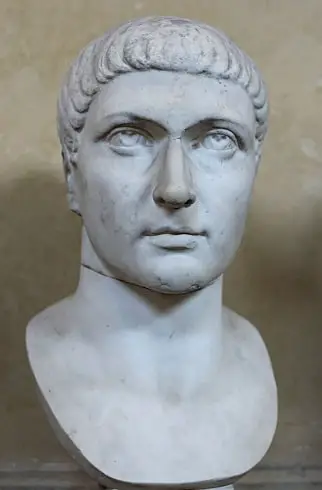
During the reign of Constantine I, 306 AD to 337 AD, Christianity underwent a significant transition and became a legal religion in the empire.
The 'Edict of Milan' issued by Constantine I and Licinius in February 313 AD ceased persecution of Christians and decriminalized Christianity in the nation.
The Edict of Milan granted the nation's people the liberty to follow any mode of religion they thought was best for them. This provided tolerance to all the other religions, including Christianity.
Being repeatedly subject to harassment and execution for over 250 years, the Christians were finally provided legal acceptance in the empire.
The legalization of Christianity was a turning point for the religion. It was an essential factor that constituted the rapid growth of Christians throughout and after the Constantinian era.
By 350 AD, Christianity had gained about 30 million followers and was still growing phenomenally.
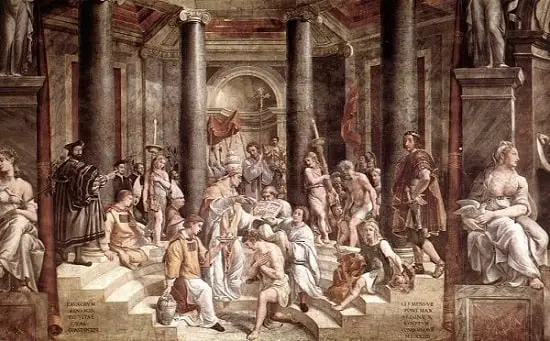
Constantine I, who legalized Christianity in Ancient Rome, was also the first-ever imperial supporter of the religion.
He declared himself Christian after issuing the Edict of Milan. He was considered the promoter of the newly legalized religion.
Constantine I provided financial assistance to build churches and granted the clergy tax reliefs.
He even returned the property confiscated during the Great Persecution of Diocletian belonging to the church.
He was bestowing so much towards the development of Christianity, including privileges to the higher-ranking officers if they converted.
The initiation of persecution of pagans in the late Roman empire also happened during the reign of Constantine I.
It began after the emperor destroyed a pagan temple in Jerusalem to build a church in its foundation.
This persecution movement resulted in the destruction, conversion, and abandonment of numerous pagan temples throughout the empire.
He actively facilitated the unraveling and resolving various disputes that arose due to the clashing beliefs of different groups of Christians.
In 325 AD, Constantine I called the first empire-wide meeting of bishops to resolve their differences regarding the true nature of Christ.
Apart from presiding over this council of bishops, Constantine I promoted Christianity by subjecting non-Christians to discriminatory imperial laws that were valid across the empire.
The imperial support that backed up Christianity was undoubtedly an essential factor contributing to its tremendous growth in the years following the Constantinian era.
How did Christianity grow in Ancient Rome?

After Constantine, the succeeding emperors either embraced Christianity or only endured it, regardless of which the religion continued to flourish.
The construction of churches, charitable activities, and gatherings were being conducted freely by the Christians after their religion was decriminalized in the Roman Empire.
On February 27, 380 AD Christianity was declared the official state religion in the Roman Empire.
Eastern Roman Emperor Theodosius I, along with the Western Roman Emperor Gratian and his co-ruler Valentinian II, issued the Edict of Thessalonica.
This decree made the Catholicism of Nicene Christians in the Great Church the state church of the Roman Empire and disregarded other Christian creeds.
The practice of pagan rituals was also made punishable. This was a firm step since Christianity was promoted alongside the suppression of paganism.
The increase in the number of followers of this religion was happening tremendously within the Roman Empire.
The powerful promise of salvation and eternal life that Christianity was based upon significantly contributed to the religion's growing popularity.
From being the most hated religious movement to becoming the official state religion, Christianity did not spread across Rome overnight.
It was a tedious and often torturous journey of the violently anti-Christian Roman Empire to a pro-Christian state.
How did Christianity alter sports in Ancient Rome?
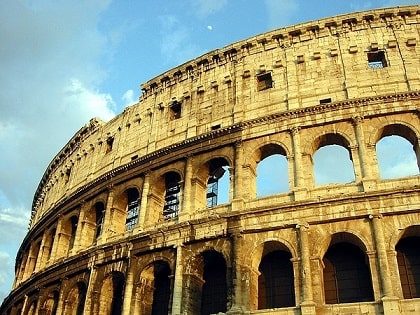
Sports in Ancient Rome were perceived as spectacles displayed at the arena, circus, and theatre for entertainment.
These displays were sponsored by the Roman government and considered an integral part of Roman politics.
Gladiator combat, boxing, animal baiting, and hunting were among the most popular games in Ancient Rome.
These games displayed gruesome treatment and even killing of animals and humans. Romans of all classes would attend these dreadful spectacles.
Christianity prohibited its followers from witnessing or participating in these brutal sports.
Church fathers and followers considered the games to be a cruel practice and even protested against these games.
Christians had ample reason for their hatred as early Christians were forced to watch such games and participate unwillingly.
These games continued for quite a bit, even after the Christianization of the Roman Empire. Although, it was undoubtedly the influence of Christianity that discouraged these bloody and fatal games.
The state religion and unbearable expense to conduct these games during the declining years of the Roman Empire resulted in the termination of Ancient Roman games.
Conclusion
Christianity is the most popular religion in Rome to this day. The city is regarded as the 'home of the Catholic Church.'
It has over 900 churches, which is not surprising considering Rome's ancient and strong association with the Catholic faith.
Looking back to the rise and growth of Christianity in Ancient Rome, there were a lot of testing points that might have resulted in the fall of this religion.
The constant persecutions, harassment, mistreatment, and executions of the followers of Christianity did leave the early Christians scarred for quite some time.
Regardless, Christianity evolved to be declared a legalized and accepted religion after a few hundred years of unfair treatment.
The religion spread worldwide and is now recognized as one of the most followed religions around the globe.
Source: https://historyten.com/roman/rise-christianity-ancient-rome/
Postar um comentário for "Why Did Christianity Continue to Grow in Rome Despite Roman Persecution"